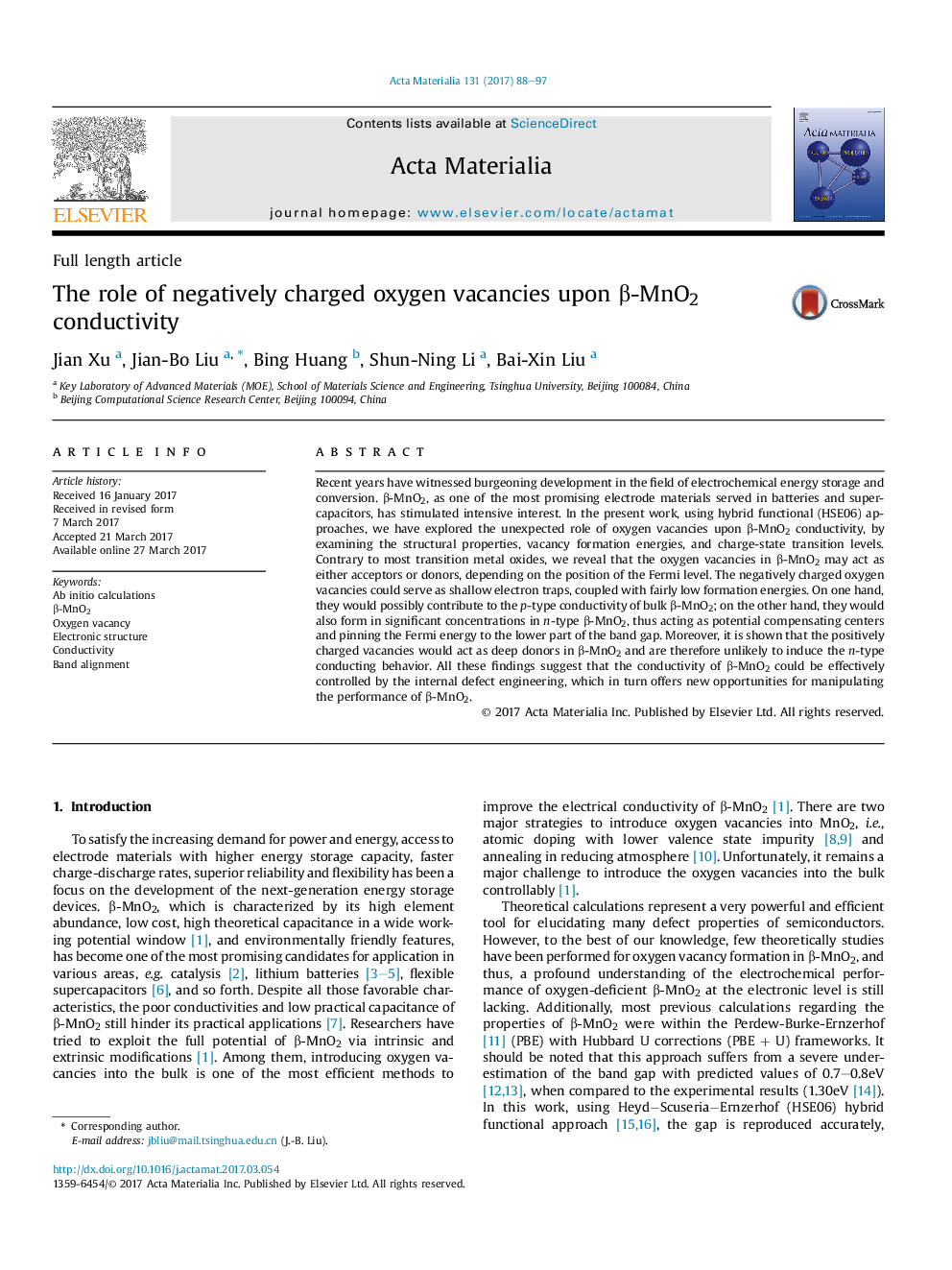| Article ID | Journal | Published Year | Pages | File Type |
|---|---|---|---|---|
| 5435840 | Acta Materialia | 2017 | 10 Pages |
Recent years have witnessed burgeoning development in the field of electrochemical energy storage and conversion. β-MnO2, as one of the most promising electrode materials served in batteries and supercapacitors, has stimulated intensive interest. In the present work, using hybrid functional (HSE06) approaches, we have explored the unexpected role of oxygen vacancies upon β-MnO2 conductivity, by examining the structural properties, vacancy formation energies, and charge-state transition levels. Contrary to most transition metal oxides, we reveal that the oxygen vacancies in β-MnO2 may act as either acceptors or donors, depending on the position of the Fermi level. The negatively charged oxygen vacancies could serve as shallow electron traps, coupled with fairly low formation energies. On one hand, they would possibly contribute to the p-type conductivity of bulk β-MnO2; on the other hand, they would also form in significant concentrations in n-type β-MnO2, thus acting as potential compensating centers and pinning the Fermi energy to the lower part of the band gap. Moreover, it is shown that the positively charged vacancies would act as deep donors in β-MnO2 and are therefore unlikely to induce the n-type conducting behavior. All these findings suggest that the conductivity of β-MnO2 could be effectively controlled by the internal defect engineering, which in turn offers new opportunities for manipulating the performance of β-MnO2.
Graphical abstractDownload high-res image (308KB)Download full-size image
